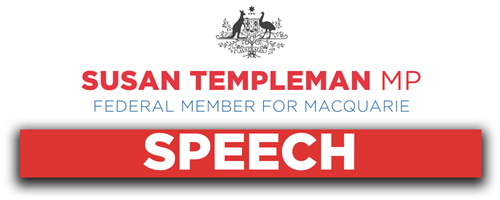
In the last few years, thousands of people in the Hawkesbury and Blue Mountains have, probably for the first time in their lives, had to apply for the Australian government disaster recovery payment. I know I had to do it for the first, and only, time a decade ago. You do the application in a total blur because you're only eligible if you've been through a massive natural disaster—a bushfire, a flood, a major storm, a cyclone. You apply in a traumatised state, and, even though you might sound coherent to the outside world, inside you're thinking you've possibly just lost every possession you ever owned, including your home, or at the very least you have no idea what is salvageable and what isn't.
The disaster recovery payment provides a short-term one-off financial assistance to eligible Australians. It simply offers a helping hand in the immediate aftermath of a major disaster. The payment is $1,000 per eligible adult and $400 per eligible child, and is delivered by Services Australia. It helps a little, to go towards the purchase of some of those really essential items you need right from the start. You need clean undies, toiletries, really basic clothing, school items, work gear, towels, sheets and probably a pillow. Whatever is needed in the immediate aftermath of an event, it's there to be used to help Australians and their families recover.
The Hawkesbury and Blue Mountains have had multiple disaster declarations in the last few years. In the Hawkesbury in 2019-20, in the bushfires, 10,000 adults and children were eligible for the disaster payment; that was worth $9.5 million. In the Blue Mountains it was 14,000 adults and children, and it was a $12 million payment that went to those individuals $1,000 at a time or $400 at a time. We've also had storms and floods in the Hawkesbury. In 2021 the floods and storms led to 6,400 people being eligible for $7 million of payments. In the March 2022 floods 17,000 people were eligible, and it was a $19.5 million payment that helped people get through the immediate aftermath. In the June 2022 floods 16,000 people were eligible, and it was an $18.8 million payment to support those community members. For the Blue Mountains in the 2021 storms 3,000 applications were approved at a cost of $4 million. The March 2022 storms saw 11,000 applications, resulting in $13 million of payments. The June 2022 storms saw 8,000 applications with payments of $9 million.
We saw the huge demand, through all of that, that was put on staff at Services Australia, who were largely
manually processing many of those claims. This legislation, the Social Security Amendment (Australian
Government Disaster Recovery Payment) Bill 2023, is about providing objective criteria on which to assess
claims for disaster recovery payments. We can support increased use of automatic decision-making so the online assessment process is faster and more efficient, meaning people will get payments within days rather than weeks. The use of automation allows a person to enter their information to claim a payment, and a computer will check that information within certain limitations or business rules. If the information provided does not meet a business rule, it will move out of the automatic decision-making system and the claim will be assessed manually. Not meeting those business rules does not necessarily mean a person won't qualify for the payment; everybody's circumstances are unique. No-one will have their claim for a disaster recovery payment rejected through automation. What will happen is the manual assessment against a number of discretionary criteria will come into play.
It's really important we have these changes in place before the next high-risk weather season, which is virtually upon us, formally starting on 1 October. Services Australia needs to have tools to process claims quickly. This bill will help achieve that for claims that meet the qualification criteria introduced by the bill. For Australian citizens or a person on a certain visa who has spent a particular amount of time in Australia before a major disaster, or for people who care for a child or children adversely affected by a major disaster, this may well help speed up the claims process. We all hope we won't need to use it, but we all know disasters will continue to happen right across the country. This bill will provide the government with a clearer ability to quickly and efficiently support communities affected by disasters, which is our government's absolute priority, particularly when the scale of disaster is beyond the capacity of a state or territory government.
I commend this bill to the House.


